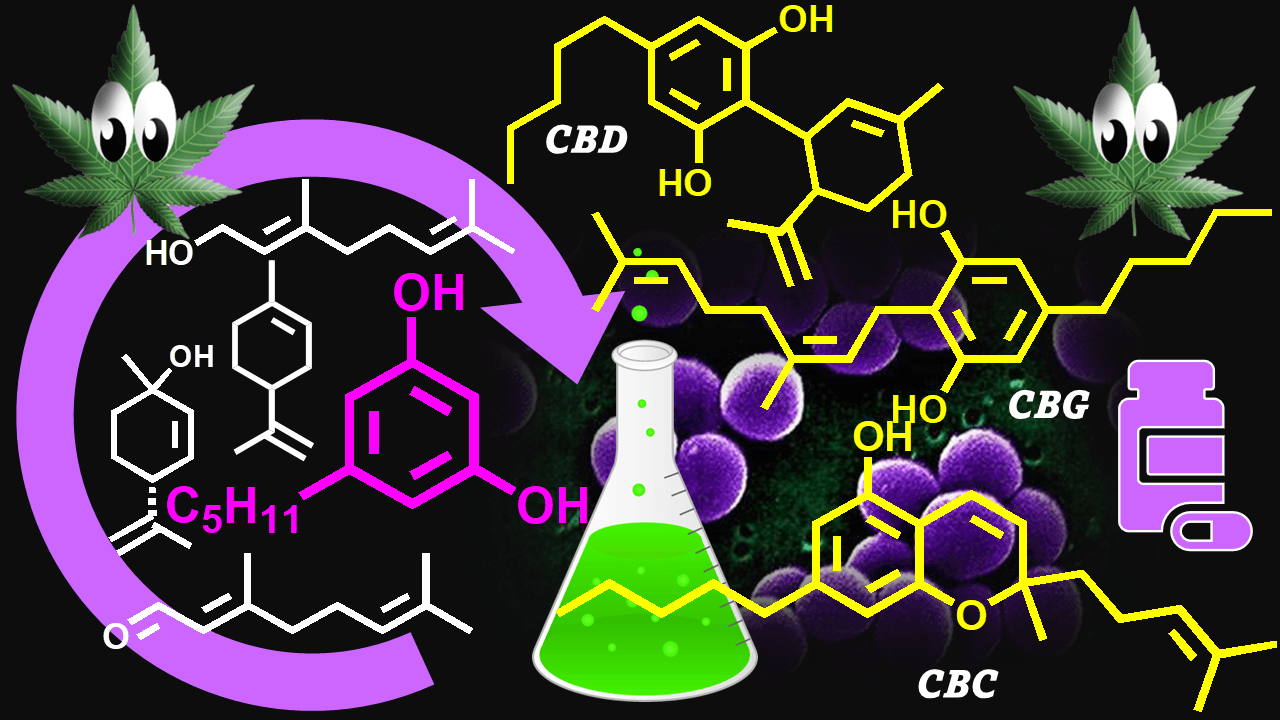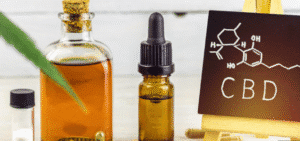The cannabis plant has over 100 different cannabinoids, both psychoactive and non-psychoactive. THC gets a lot of focus as it is the primary cannabinoid causing the signature “high” from use of marijuana. However, cannabis in alternative medicine is showing potential beyond the entourage and mental calmness. Non-psychoactive cannabinoids, particularly CBD (cannabidiol), CBC (cannabichromene), and CBG (cannabigerol), offer several therapeutic benefits.
Here we explore the CBC vs CBD vs CBG comparison to help you make informed decisions about cannabis-based wellness products.
Sections
ToggleWhat is CBD?
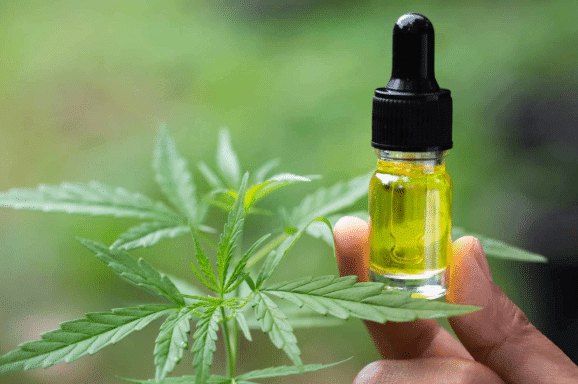
CBD, or cannabidiol, is the most widely studied non-psychoactive cannabinoid. In 1940, American chemist Roger Adams discovered CBD during his hemp research. He found that CBD can offer therapeutic benefits without the “high” effect produced by its psychoactive counterpart THC.
In cannabis plants, CBD is present in concentrations ranging from 0.1% to 25% depending on strains. This cannabinoid can interact with the body’s endocannabinoid system, primarily influencing CB1 and CB2 receptors indirectly, and also affects other receptor systems, including serotonin and vanilloid receptors. As a result, it can potentially benefit conditions including anxiety, chronic pain, inflammation, and sleep disorders.
What is CBC?
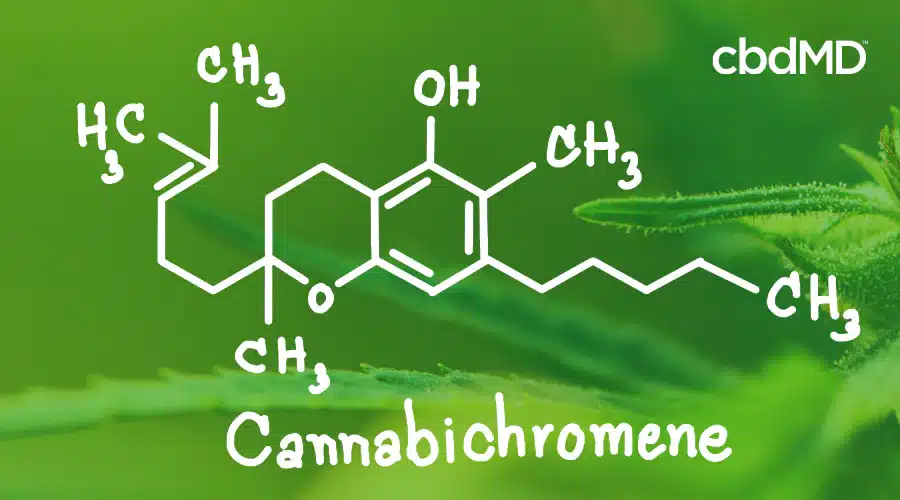
CBC or cannabichromene, is another primary non-psychoactive cannabinoid discovered in 1966. It is found in younger cannabis plants in much lower concentrations (0.1% to 1%), as it breaks down into other compounds when the plant matures. Unlike CBD, CBC cannot strongly bind to CB1 or CB2 receptors in the endocannabinoid system. Instead, it interacts with TRPV1 and TRPA1 receptors involved in pain perception and inflammation. While more research is needed to uncover the complete benefit profile of CBC, preliminary studies show it has potential applications for neurological health, skin conditions, and mood regulation.
What is CBG?
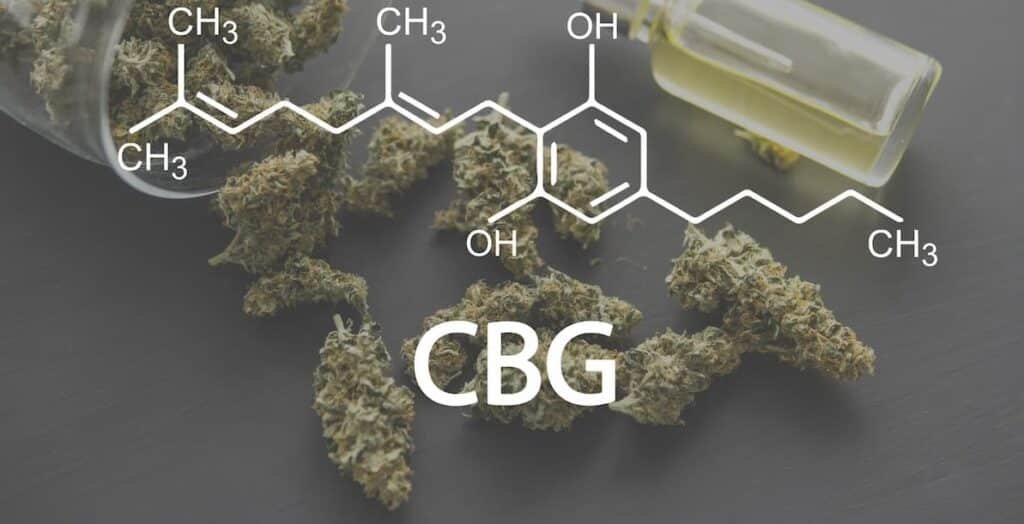
CBG, or cannabigerol, is also referred to as the “mother of all cannabinoids” for good reason. This cannabinoid is the precursor for every other major cannabinoid, including CBD, THC, and CBC. Discovered in 1964, CBG is present in very low concentrations in mature cannabis plants as it converts to other cannabinoids. CBG is more expensive than other cannabinoids as its extraction requires careful timing.
CBG also interacts with the endocannabinoid system, but differently from CBD. CBD has low affinity for CB1 and CB2 receptors; however, CBG acts as a partial agonist of both receptors. It can also influence other receptors, including alpha-2 adrenergic and serotonin receptors.
Key Differences Between CBD, CBC, and CBG
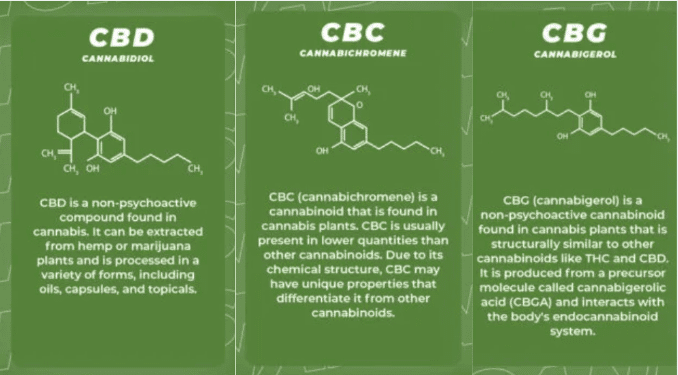
Feature | CBD | CBC | CBG |
Psychoactive | No | No | No |
Common Uses | Anxiety, pain, inflammation, sleep | Skin health, mood, pain relief | Appetite, focus, neuroprotection |
Plant Concentration | 0.1-25% | 0.1-1% | <1% |
Research Level | Extensive | Limited | Moderate |
How CBD, CBC, and CBG Work in the Body
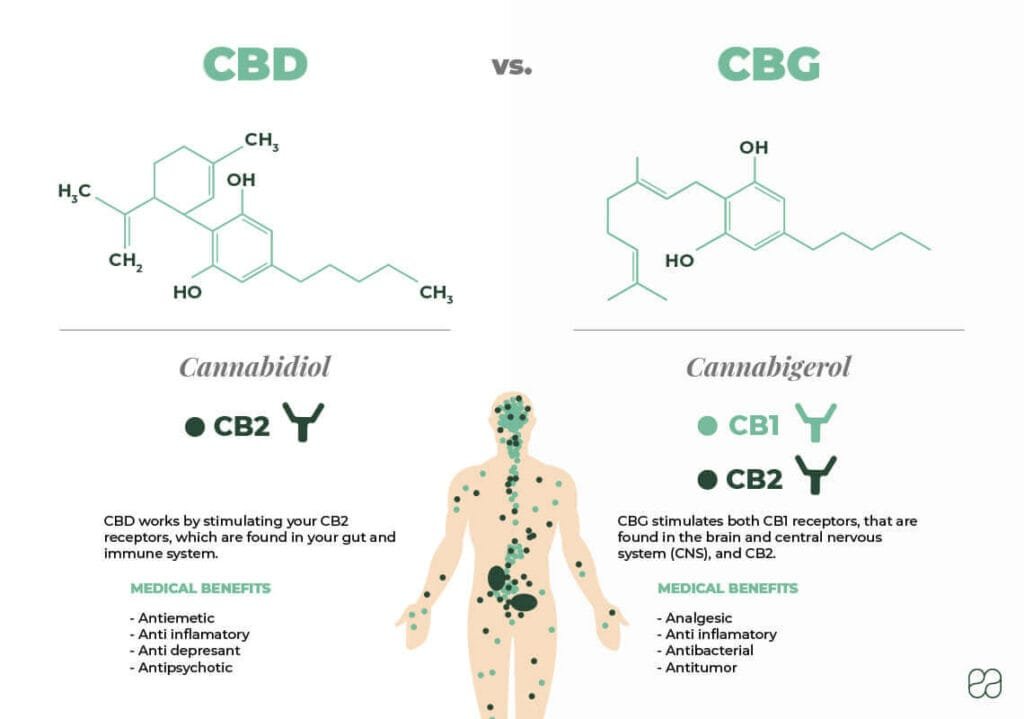
- CBC vs CBD vs CBG working is an interesting comparison. The three cannabinoids have very similar effects but have different pathways.
- CBC interacts mainly with TRPV1 and TRPA1 receptors rather than traditional cannabinoid receptors in the endocannabinoid system. It acts on pain and inflammation pathways to provide relief.
- CBD works primarily as a negative allosteric modulator of CB1 receptors. It gives therapeutic benefits by influencing multiple receptor systems, including serotonin and GABA.
- CBG acts as a semi agonist of CB1 and CB2 receptors while influencing alpha-2 adrenergic and serotonin receptors. It results in pain relief and other beneficial effects.
Benefits of CBC vs CBD vs CBG
CBC Benefits:
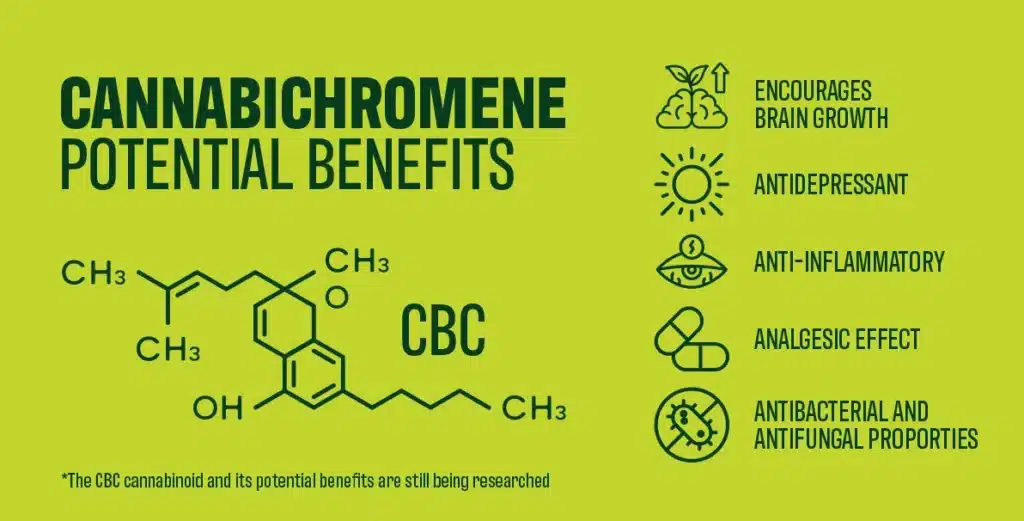
- Skin Health Support: Studies have shown CBC’s potential for treating skin conditions through its anti-inflammatory properties.
- Mood Enhancement: CBC can act as a natural antidepressant, offering effects by influencing neurotransmitter systems and promoting neuroplasticity.
- Pain Relief: Interaction with TRPV1 receptors can provide pain-relieving benefits.
CBD Benefits:
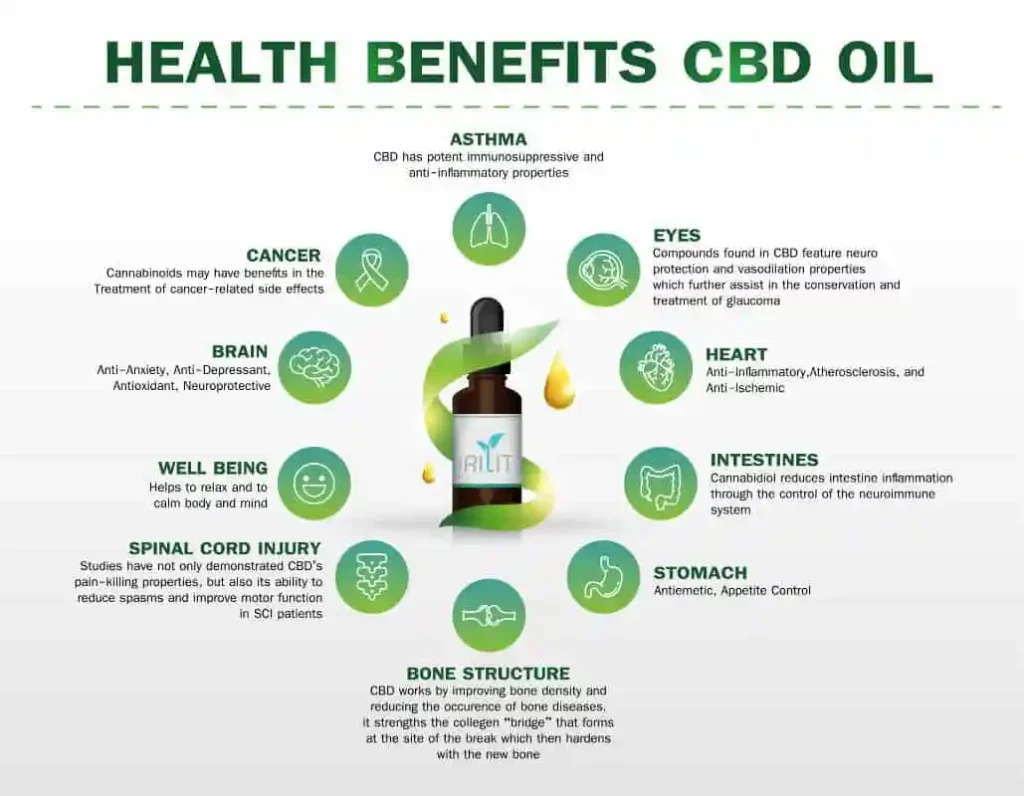
- Anxiety and Stress Relief: CBD has significant potential in reducing anxiety symptoms and promoting relaxation as it can interact with both serotonin receptors and the endocannabinoid system.
- Pain and Inflammation Management: CBD can modulate inflammatory pathways and pain receptors, helping with chronic pain and inflammation.
- Sleep Quality Improvement: CBD may help regulate sleep patterns and improve sleep quality by relieving underlying anxiety.
CBG Benefits:
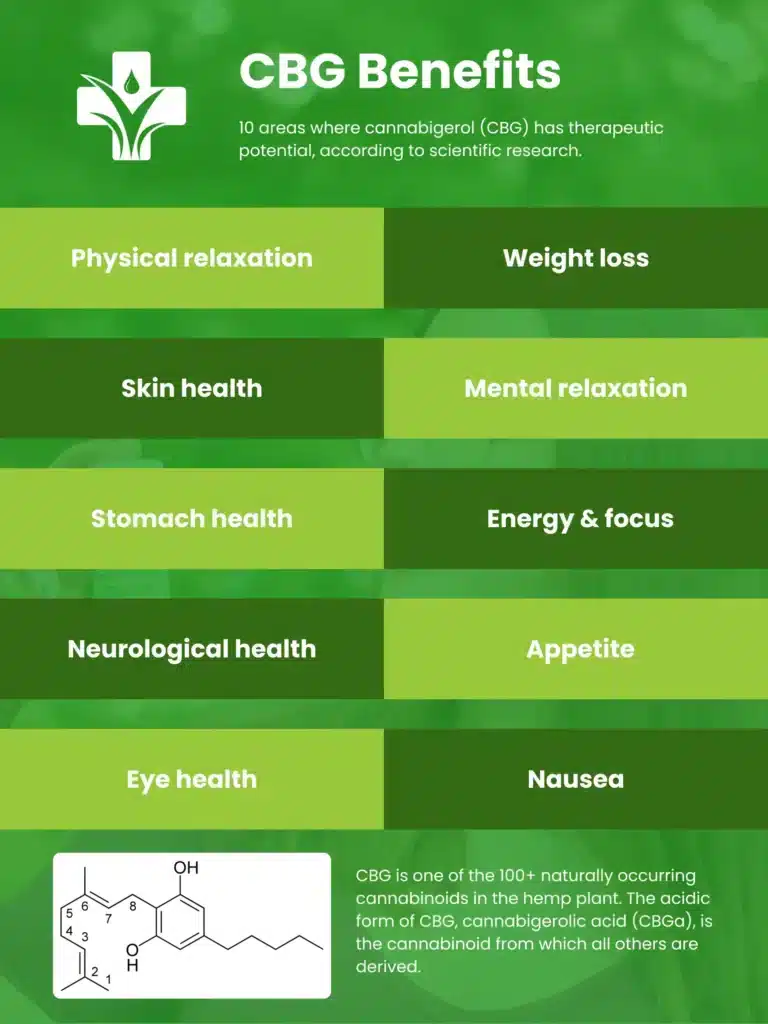
- Appetite Stimulation: CBG has appetite-stimulant properties, helping individuals experiencing less appetite due to medical conditions or treatments.
- Neuroprotective Properties: Research shows CBG can protect brain cells and support neurological health, potentially offering management of conditions like Huntington’s disease and glaucoma.
- Focus and Mental Clarity: CBG can be a safe supplement for improved focus and mental clarity due to its interaction with neurotransmitter systems.
CBD vs CBC vs CBG: Usage and Dosage
- Oils and Tinctures: All three cannabinoids are available in these liquid forms. They allow precise dosing and sublingual absorption, resulting in relatively quick onset times and faster relief.
- Capsules or Tablets: More convenient oral forms allow users to use measured doses with longer-lasting effects. However, capsules and tablets have slower onset times.
- Topicals: Cannabinoid creams, balms, and lotions offer localized effects without systemic absorption. Topicals are ideal for targeted skin or muscle applications.
- Edibles: CBC, CBD, and CBG are also available in edible forms such as gummies, chocolates and other consumables. They are excellent for discreet consumption with long-lasting effects.
There is no uniform dosage, varying significantly among individuals depending on body weight, metabolism, tolerance, and desired effects. Irrespective of these factors, users must start with low doses, gradually increasing to find the optimal therapeutic dosage.
Side Effects and Safety
While these non-psychoactive cannabinoids are generally well-tolerated, for safety precautions, it is advisable to.
1. CBD:
CBD can result in mild side effects, including drowsiness, dry mouth, and diarrhea. Also, there is potential for interactions with certain medications. The WHO has declared CBD to have a good safety profile, meaning it has low potential for abuse.
2. CBC & CBG:
Similarly, CBC and CBG are well tolerated with minimal reported side effects. However, limited research into these two cannabinoids means comprehensive side effect profiles are still being established.
Choosing the Right Cannabinoid
1. Choose CBD if:
Your primary goal is to seek relief from anxiety, chronic pain, inflammation, or sleep issues. As the most researched non-psychoactive cannabinoid, it is an excellent starting point for cannabis wellness newcomers.
2. Choose CBC if:
Skin care and mood enhancement are what you are interested in. CBC can appeal to those seeking alternatives to traditional skincare treatments or mood support.
3. Choose CBG if:
You want aid in appetite, focus, or neurological health. CBG is the right match for patients seeking mental clarity or appetite-related challenges.
Conclusion
CBC vs CBD vs CBG is essential to understand for making informed decisions. When you know these three distinct cannabinoids, each offering unique therapeutic potentials and mechanisms of action, you can choose the one that best matches your needs. CBD excels in anxiety, pain, and sleep support; CBC has potential for skin health and mood; while CBG offers potential benefits for appetite, focus, and neuroprotection.

